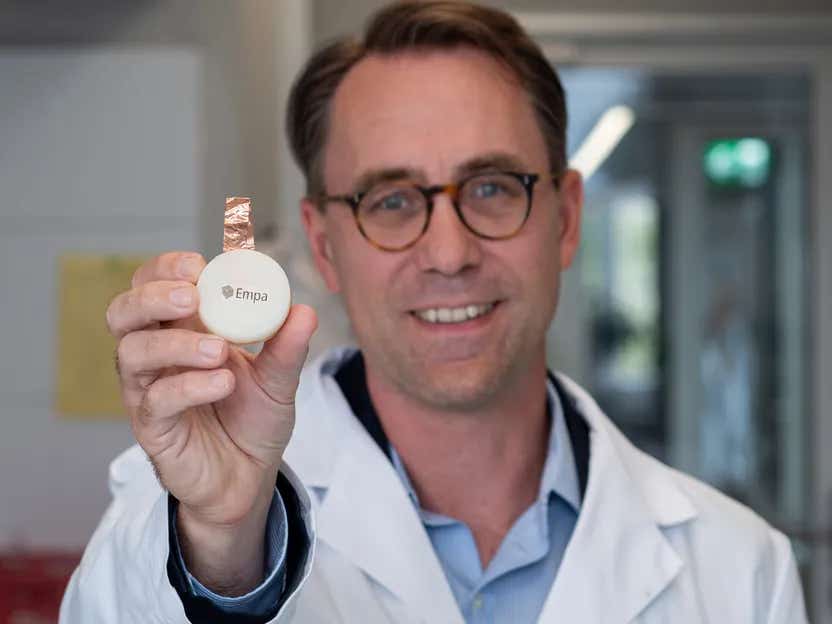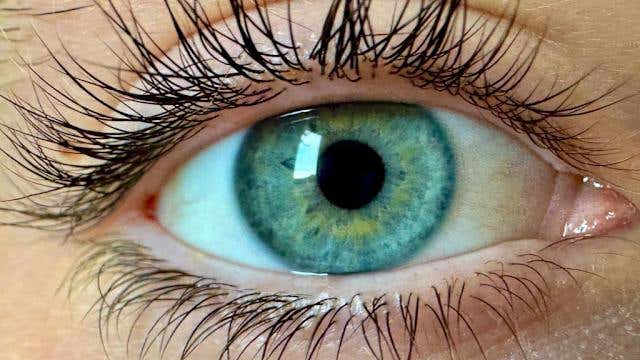Long-term, regular exercise improves fat health, reducing disease risk
A new study shows that long-term exercise helps people with obesity develop healthier fat tissue, reducing the risk of fat accumulating in dangerous places like organs.

Concept illustration showing a diverse group of adults engaging in various forms of exercise at a scenic park. (CREDIT: Nicole Smith, made with Midjourney)
People who exercise regularly, even while living with obesity, have healthier fat tissue than those who don't, according to a new study from the University of Michigan.
The research, led by Jeffrey Horowitz, a professor of movement science at the U-M School of Kinesiology, shows that long-term exercise can enhance the ability to store fat more efficiently. While this may sound counterintuitive at first, it actually highlights a key health benefit of regular physical activity.
The team also grew fat tissue in the lab using cells collected from both exercisers and non-exercisers. Interestingly, the cells from those who exercised developed into fat tissue that stored fat more effectively.
"Our findings indicate that in addition to being a means to expend calories, exercising regularly for several months to years seems to modify your fat tissue in ways that allows you to store your body fat more healthfully if or when you do experience some weight gain––as nearly everyone does as we get older," Horowitz explained.
The challenge of conducting long-term studies to track how exercise changes fat tissue led the team to compare two groups of adults with obesity. One group included 16 people who exercised at least four times per week for at least two years, with an average of 11 years.
The other group included 16 individuals who had never exercised regularly. Both groups were matched in body fat mass, weight, and sex. By taking fat samples from beneath the skin, known as subcutaneous adipose tissue, researchers were able to observe significant differences between the two groups.
Related Stories
The exercisers showed distinct structural and biological changes in their fat tissue. Their fat cells had more blood vessels, more mitochondria (the "powerhouses" of cells), and more beneficial proteins. Additionally, they had less of a certain type of collagen that can disrupt metabolism and fewer cells that promote inflammation. In contrast, the non-exercisers lacked these features.
This difference in fat tissue is important because subcutaneous adipose tissue, found just under the skin, is considered the healthiest place to store fat. When fat is stored here, it reduces the likelihood of fat being stored in more harmful locations, such as around organs or even within organs themselves, which can lead to a variety of health problems.
Horowitz emphasized, “Compared with our previous study in which we examined the effects of three months of training on fat tissue, we generally see these differences are more robust in people who exercise regularly for years versus those who don’t exercise.”
While the findings highlight the benefits of exercise, they also clarify a common misconception: increasing the capacity to store fat doesn’t mean you’re gaining more fat. Weight gain occurs only if there’s an excess of calorie intake.
The advantage, as Horowitz points out, is that when people with a greater fat storage capacity do gain weight, the fat is more likely to be stored in healthier areas, such as beneath the skin, rather than around or inside vital organs.
This distinction is crucial because storing fat in or around organs can contribute to a range of serious health issues. One such issue that’s receiving increasing attention is nonalcoholic fatty liver disease (NAFLD). NAFLD is a condition in which fat accumulates in the liver, potentially leading to more severe health problems, such as cirrhosis or liver cancer. It is particularly common among people with obesity or those who are overweight.
To build on these findings, Horowitz stressed the need for long-term studies to track people as they begin and maintain exercise routines over several years. This would help researchers observe how fat tissue evolves, even if a person’s overall fat mass doesn’t change significantly. Additionally, there is still much to learn about the types or intensities of exercise that might provide the most benefits in modifying fat tissue.
Future research may also explore whether fat tissue grown from exercisers and non-exercisers functions differently and whether these differences have broader implications for the health of the person from whom the cells were taken. Understanding these cellular differences could offer deeper insights into how exercise improves overall health beyond fat storage.
Horowitz and his team’s study, titled "Long-term exercise training has positive effects on adipose tissue in overweight or obesity," was published in Nature Metabolism. The study provides further evidence that regular exercise can have profound, long-term effects on your body’s ability to manage fat, potentially preventing the onset of serious diseases linked to fat accumulation.
Note: Materials provided above by The Brighter Side of News. Content may be edited for style and length.
Like these kind of feel good stories? Get The Brighter Side of News' newsletter.
Rebecca Shavit
Science & Technology Journalist | Innovation Storyteller
Based in Los Angeles, Rebecca Shavit is a dedicated science and technology journalist who writes for The Brighter Side of News, an online publication committed to highlighting positive and transformative stories from around the world. With a passion for uncovering groundbreaking discoveries and innovations, she brings to light the scientific advancements shaping a better future. Her reporting spans a wide range of topics, from cutting-edge medical breakthroughs and artificial intelligence to green technology and space exploration. With a keen ability to translate complex concepts into engaging and accessible stories, she makes science and innovation relatable to a broad audience.



